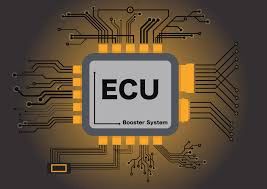WHAT IS ENGINE REMAPPING?
25-Jul-2024

Engine remapping (also covered under the broad term ‘tuning’ in the USA or known as ‘chipping’) refers to the process of altering your car engine’s computer or the engine control unit (ECU). The ‘maps’ and ‘modes’ are a range of data tables which consider both what is happening with the car in real-time and the driver’s input to work out what to do with the engine. They are essentially computer algorithms which are running behind the scenes while you’re driving and having an impact on numerous engine operations, such as ignition timing, sensors, air/fuel ratio, and turbocharging boost pressure.
Like software on a phone or laptop, this software which dictates how the engine functions can be modified and re- or overwritten in order to change how the car works and to optimise the performance of your car.
When performing an ECU remap we typically access the cars ECU via the car’s On Board Diagnostics port (or simply the OBD port). Since around 2002, a new standard, OBDII has made directly accessing the information stored on the car’s computer accessible with the right equipment and protocols (an OBD scanner), allowing drivers to see all of the engine’s operations and how they are being performed.
The ECU can be remapped to alter almost any of its functions in a way that a driver might want to. Professional F1 or rallying race teams use engine remapping extensively. They will often have a variety of different engine maps that demand various different things from the engine. For example they can alter how much torque is produced when the throttle is opened to accommodate for the possibility of wheel spin when accelerating out of corners, to deal with wet weather, to take high altitude into account, or maps to save the engine power in qualifying rounds. It’s all about customisation.

 Loading..
Loading..